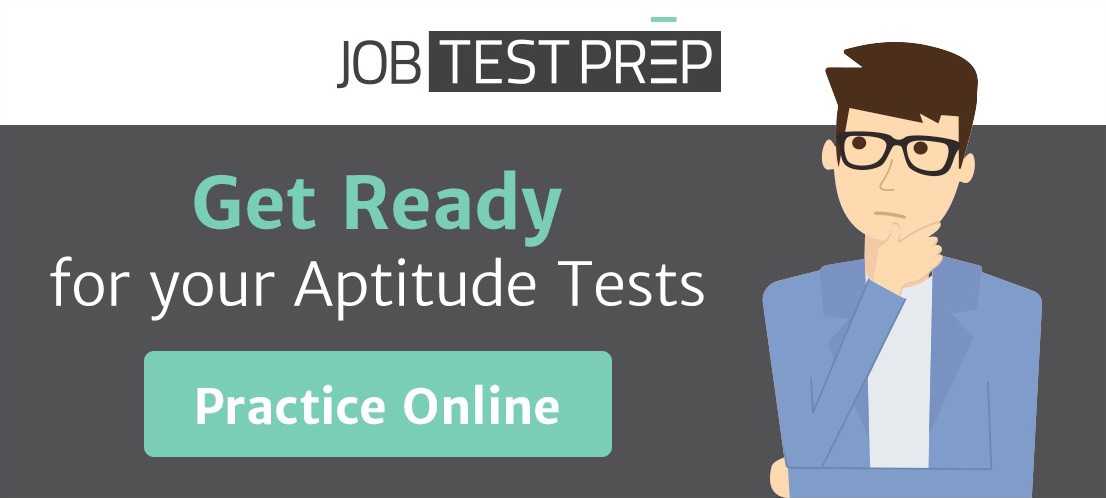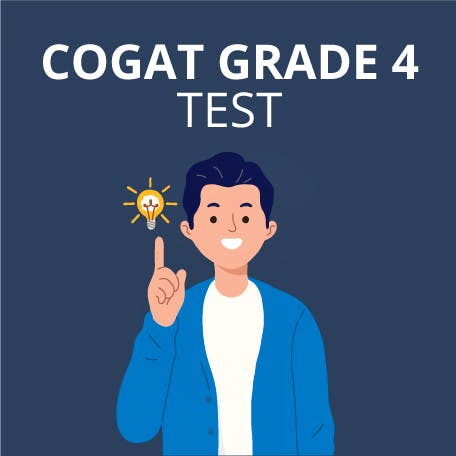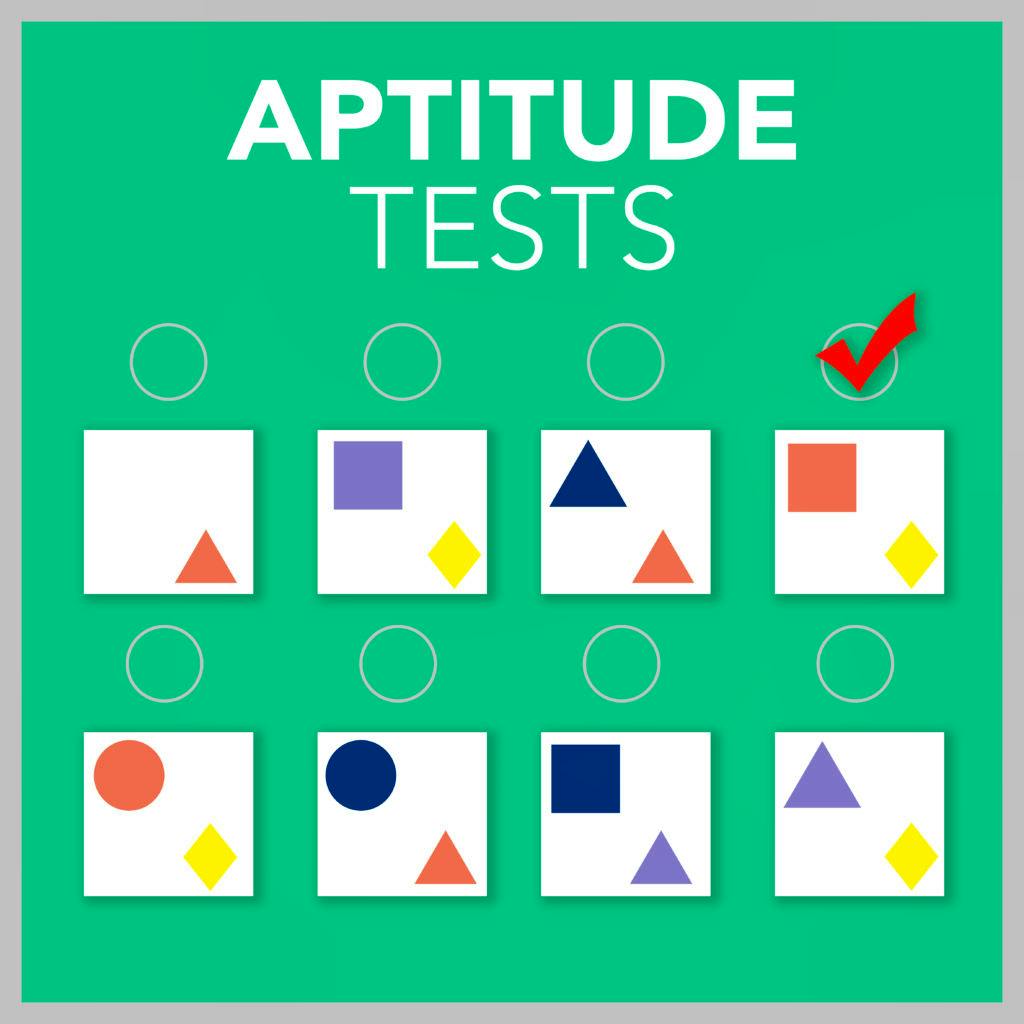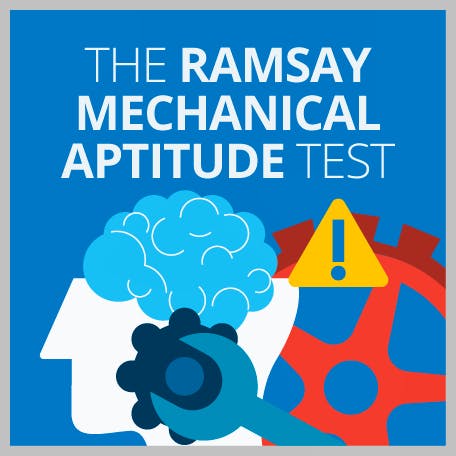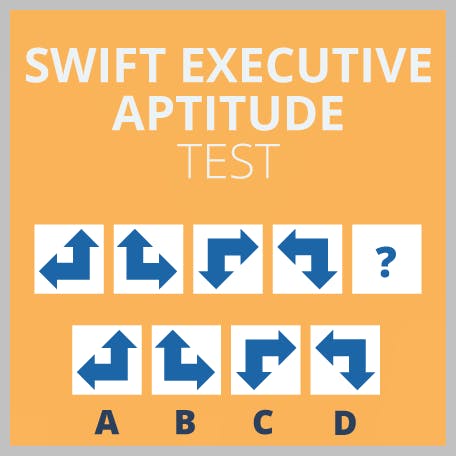Aptitude Tests: 10 Sample Questions and Answers
Updated November 27, 2024
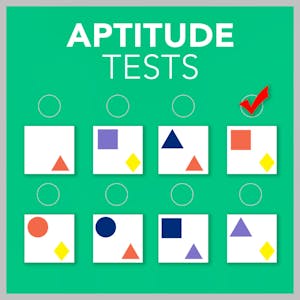
- Abstract Reasoning Tests
- Abstract Reasoning Example Questions
- Critical Thinking Test
- Numerical Reasoning Test
- Verbal Reasoning Test
- Attention to Detail Test
- Other Types Of Specialised Aptitude Tests
empty
empty
empty
- Proprietary Aptitude Tests
empty
empty
empty
empty
empty
empty
- How to Prepare for an Aptitude Test
- Frequently Asked Questions

Aptitude tests are administered to understand your inherent abilities to reason and respond to specific tasks.
They are widely used in various forms to screen candidates or evaluate existing employees for a future job role.
The most generic and widely used aptitude tests are curated to measure different facets of your abilities, mainly on the following areas:
Apart from these base types, there are various other specialized aptitude tests which you may face in specific industries or based on your role in different career stages.
We have discussed each of the most common job related aptitude tests in detail.
Illustrative examples and helpful hints are provided throughout to aid your preparation.
Read on to find out more.
PRO TIP:
Visit JobTestPrep for the best online Psychometric Test practice.
Test packs start from £39 with a money back guarantee
Abstract Reasoning Tests
In Abstract Reasoning Tests you are presented with a set of abstract images or shapes.
The ask is to identify a missing item or find the last item in the sequence.
These tests try to evaluate your ability to work with concepts and abstract ideas.
They are often used to screen for positions where problem-solving and analytical skills are required.
Versions of Abstract Reasoning Tests are also variously referred to as Diagrammatic Tests or Inductive Reasoning Tests.
The most common types of questions asked in an Abstract Reasoning Test are as follows:
- Compete the sequence
- Find the missing item in sequence
- Find the odd one out
Remember to check for the following while you answer abstract reasoning questions:
- Look out for a pattern in the movement inside the given area. The movements can be clockwise or anti-clockwise.
- Repeat the observation for all constituent ‘items’, check out for one ‘rule’ at a time.
- Check for rotations of individual items on its axis; generally rotations are 45, 90 or 180 degrees in either clockwise or anti-clockwise direction.
- Check for sequence of changing colours or shading.
- Check for sequence of alternating items (e.g. a triangle may alternate with a hexagon in a given position between consecutive steps).
- Check for a pattern in the figure (e.g. triangle (3-sides) > square (4-sides) – pentagon (5-sides) > hexagon (6-sides), etc.).
Abstract Reasoning Example Questions
1. Complete the sequence from the options given below:


2. Find the odd one out from the figures given below:

Critical Thinking Test
This family of tests is meant to evaluate how you can critically analyse any set of information to draw logical conclusions.
You may need to compare between statements and assess whether the information presented is consistent, deducible or independent.
The test examines your capacity to use logical reasoning while interpreting textual information.
Critical Thinking Tests are also sometimes referred to as Logical Reasoning Tests.
Following are the main types of questions that may be asked:
- Understanding of cause and effect
- Recognition of assumptions
- Evaluation of arguments
- Drawing of conclusions
A variation of the critical thinking test also tests your ability to deal with Sequences and arrangements.
The critical thinking test is extensively used for managerial and mid-to-senior level positions and certain specific job roles (like in legal or para-legal professions).
A Watson Glaser Test is a widely known version of critical thinking test that is globally used by corporates for evaluating candidates for screening and promotion purposes.
3. Sidney is older than Rachel. Rachel and Beatrice are both older than Tina. Elena is not the youngest.
Who is the youngest of the five?
a) Rachel
b) Tina
c) Elena
d) Cannot say
4. Statement 1: Budget tourism has seen a marked increase over the last decade.
Statement 2: Many wealthy patients from developed economies have visited countries in the Far East for organ transplantation surgery.
a) Both the statements I and 2 are independent causes.
b) Statement 2 is the cause and statement I is its effect.
c) Statement I is the cause and statement 2 is its effect.
d) Both the statements I and 2 are effects of independent causes.
Numerical Reasoning Test
Numerical Reasoning Tests determine your comfort with numbers and ascertain how efficiently you can handle numerical problems.
The types of questions cover a wide expanse.
However, these are some of the most common types of numerical reasoning questions that you may encounter:
- Understanding number pattern and sequence
- Interpreting graphs
- Interpreting tables
- Foundational knowledge of fractions, recurring, percentage, etc.
The following may come in handy while answering numerical reasoning type of questions:
- In percentage type questions it is almost always easy to consider a total of 100 and then move from there. Decreases time spent in working with fractions or decimals.
- Try quick approximations. For example, dividing by 10.2 would give an answer which would be a close approximation of a division by 10. Will save time while calculating.
- Sometimes it is quicker to try arriving at the answer using the options given. Try back-calculating.
- For sequence type of questions normally arithmetic or geometric progression, powers and common multipliers are used. Sometimes the difference between consecutive numbers may be in a sequence or the given sequence can be in fact a combination of two sequences.
5. Identify the next number in the following sequence:
25, 49, 97, ?
a) 159
b) 179
c) 139
d) 193
6. The following figure shows the propensity to spend of visitors at an online store in Q1, 2019.
Assuming in the next quarter the Low Propensity and High Propensity customers double, while the Medium Propensity customers get halved, what would be the percentage of High Propensity customers in Q2, 2019?
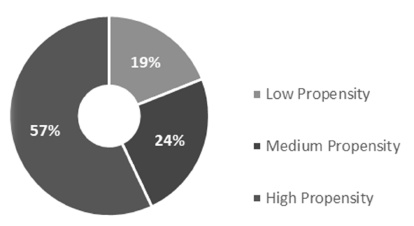
a) 70%
b) 75%
c) 77%
d) 79%
Verbal Reasoning Test
Verbal Reasoning Tests would measure your ability to comprehend written information quickly and correctly.
It may also evaluate how well you can relate the data presented in various places of a passage and draw appropriate inferences.
Ability to understand subtleties of the language is also tested to understand your basic communication skills.
The complexity of the test would vary depending upon seniority and type of position.
The following tips may be helpful while answering verbal reasoning questions:
- Never assume anything which is not in the given text even if it is ‘common knowledge’. Only information presented in the passage is to be considered while answering any question.
- Read the passage carefully with attention to detail. Be careful not to miss out on any details within the text.
- Practise quick reading. Sometimes the passages may be quite big and unless you practise speed reading you may get stranded for time.
- Look out for options like ‘cannot say’ or ‘cannot be inferred’. Sometimes information given in the passage would be kept intentionally insufficient and this would indeed be a correct option to choose.
7. Aachen university is globally acclaimed for its rich curriculum and celebrated alumni, many of whom hold prestigious positions in multinational companies, home and abroad.
It is the largest technical university in Germany.
The teaching pedagogy is focused on practical application of knowledge rather than cramming of theory.
Students are encouraged to actively participate in co-curricular activities and a percentage of marks is set aside for documented voluntary social work during a semester.
The university also boasts of a robust internship program and has tie-ups with reputed companies in mainland Europe.
Inference: The university attracts a lot of foreign students annually. The above inference is:
a) True
b) False
c) Probably True
d) Probably False
e) Insufficient Data
8. It is difficult to survive in the present day industry on cost case alone.
Clients and consumers are more and more stressing on quality.
To promote a low cost model, the organisations banking on cutting costs are often compelled to cut corners during production or development.
Ultimately, as it so happens, the stringent quality checks are often compromised.
However, the modern day consumers are by and large comfortable to pay for the cost of quality instead of merely paying less upfront for a product or service of questionable quality.
In the long run, the added cost of quality pays for itself by lowering lingering maintenance and defect fixing costs and prolonging the working life of a product or service procured.
Makes more economic sense to pay a thousand dollars for a quality product upfront and stay relaxed for 10 years than buy three similar products for five hundred dollars thrice in a decade.
Not to mention the additional installation and/or re- training costs and loss of peace of mind!
The passage above refers to:
a) Wastage of resources in the name of quality.
b) Unreasonably high cost of quality.
c) Growing consumer distaste for higher price in the name of quality.
d) Consumer awareness on quality vis-à-vis cheaper alternatives.
Attention to Detail Test
The attention to detail test evaluates your ability to quickly identify errors, omissions and anomalies.
Traditionally this test used large numbers and alphanumeric strings and you were supposed to find whether two given strings matched.
However, newer versions of the attention to detail test also includes passages.
You are to carefully read through the text and answer follow-up questions asked.
Questions are carefully crafted to check how responsive you are to minute details presented (or, intentionally hidden in the write-up).
Also, you may encounter questions involving matching between two sets of addresses or similar looking email id’s in the latest versions of attention to detail tests.
These are also known as Error Checking Tests.
Attention to detail tests are widely used for various entry level positions and for job roles that require this specific skill abundantly (e.g. office assistant, secretary, admin staff, etc.).
You may like to consider the following tips while preparing for an attention to detail test:
-
In case you find it difficult to visually check and compare entire strings, feel free to devise your own ways – you may start from the left and check two numerals each or divide in groups of four. It should be fairly easy with practice. You may also want to say out the numbers aloud or use a stylus, pen or pencil tip as an aid to focus.
-
There are certain digit pairs which are most commonly used in error-checking kind of questions. For example, 3 & 8, 1 & 7, 6 & 9, 8 & 0, etc. With practice you can pick these ‘usual suspects’ more easily.
-
Human eyes often get tricked while looking at a large number of consecutive zeroes (0). If there are 4 or more consecutive zeros, check carefully – that sequence might hide a possible mismatch.
-
Look out for seemingly minor details like a missing comma (,), semicolon (;), period (.) or an apostrophe (‘).
-
For passages of text, read carefully through the sentences. While speed-reading we often tend to glance through certain words or small bits of information. The question may intentionally be created to catch these inadvertent omissions.
9. Consider the addresses for a student as on file versus as printed in the University yearbook.
| Jenny Black 75 Eastdale Lane, Brighthelm Town, East Daleside, HE45 7QP |
Jenny Block 76 Eastdale Lane, Brighthelm Town East Dale, HE45 7QP |
Which of the following statements is TRUE?
a) There are 5 differences in the addresses
b) There are 4 differences in the addresses
c) There are 3 differences in the addresses
d) There are no differences in the addresses
10. Statement A: Under the starry clear sky Averi and Hailey lay awake talking about clans, flights beyond the blue mountain ridges, battles and hunted werewolves.
Statement B: Under the starry clean sky Averie and Haylie lay awake talking about clams, fights beyond the blue mountain ridges, battled and hunted werewolves.
Which of the following is true with reference to the above statements?
a) There is no difference between Statement A and Statement B
b) There are 2 differences between Statement A and Statement B
c) There are 3 differences between Statement A and Statement B
d) There are more than 3 differences between Statement A and Statement B
Other Types Of Specialised Aptitude Tests
Apart from these generic aptitude tests which do not require any pre-learnt skills there are several other different trade specific aptitude tests that you may come across often.
Examples are:
Mechanical Reasoning Test
Mechanical Reasoning Tests are administered to check your understanding of basic laws of physics.
Generally there is no direct academic question – rather the test is geared to probe your grasp of mechanical concepts mapped to everyday scenarios.
Clarity of concept and depth of understanding of the basics are primarily evaluated.
If you are aiming for an engineering or technical job role, you may expect to appear for this type of aptitude test.
Spatial Reasoning Test
This is another type of aptitude test used mainly for design, architecture or engineering job roles.
You will be probed on your understanding of multidimensional objects represented in a two dimensional plane along with concepts of reflection, rotation, symmetry etc.
E-Tray Exercises
E-tray exercises are another job role specific aptitude test to evaluate how well you can handle and prioritise multiple concurrent tasks.
You may be presented with a workday scenario with different simultaneous job requests.
You will then be tested on your ability to delegate and arrange the assigned work based on differing priorities.
Proprietary Aptitude Tests
Now that we have gone through the basic types of aptitude tests, here’s a quick look at six of the most common proprietary tests on the market that combine one or more flavours of the base tests.
These are immensely popular in the industry and you can expect to face at least one of them in some stage of your career.
IBM Kenexa
IBM Kenexa provides a specialised version of the error checking test that would require you to compare two numeric, text or alphanumeric strings and mark whether there is a match and the two sets are the ‘same’ or there is a mismatch and the two sets are ‘different’.
In this case you should tune your strategy to save time.
You do not need to find all the differences – if there is a single difference noted you can mark it 'different’ and move on to the next.
Criteria Based Skills Test
Another flavour of attention to detail test is the Criteria Based Skills Test (CBST) by Criteriacorp.
Here you would also need to be prepared to check for grammar and spelling mistakes and test basic arithmetic functions.
Wonderlic
Wonderlic provides a popular version of aptitude test called the Wonderlic Personnel Test, which is a combination of logical reasoning, abstract reasoning, numerical reasoning types of questions along with other specific types like jumbled up sentences, vocabulary test, etc.
SHL Test
The SHL test, used by a large number of corporates globally to screen their workforce, is similarly a combination of verbal reasoning, numerical reasoning, inductive and deductive reasoning and error checking questions.
Questions are generally tougher and of higher difficulty than other similar tests in the market.
Caliper Profile Test
Perhaps one of the toughest abstract reasoning test you may face is the Caliper profile test.
It forms part of the test suite along with a behavioural section.
The questions here would deal with abstract patterns, numbers and letter sequences.
You are to find out either a missing member of the sequence or identify what comes next.
Revelian
A totally different and novel approach to aptitude tests is taken by Revelian.
Known as Cognify tests, these are game-based assessments and you would be tested on numerical reasoning, verbal knowledge and problem solving as you play six mini- games.
No multiple choice questions, no options to tick.
You play and get assessed!
How to Prepare for an Aptitude Test
Now that you have a fair idea of the type of questions you might expect while you sit for any aptitude test, remember that almost all of these tests have the following characteristics in common:
- They are almost always multiple-choice types of questions.
- Unless specific for an industry or job (as mentioned earlier), they do not require you to have any specialized prior knowledge. These tests are meant to find out your inherent reasoning, logical skills or expertise in communication and ease with numbers. Your overall alertness and attention span are also often tested.
- There is almost always a time pressure built into the tests. Many of the aptitude tests do not expect you to finish all questions within the prescribed time.
- There is generally no ordered range of complexity. All questions carry equal weightage.
- There may or may not be negative marking. Keeping these in mind, you may accordingly strategize on how to prepare for the tests.
It might help to check out the following while you prepare:
Step 1. Practise. Practise.
And then practise some more.
However hard any kind of aptitude test may feel to you, remember there are always some basic types for any given test.
Try to familiarise yourself with them and you will see your scores improve dramatically.
Step 2. Do Your Research
Before you sit for a particular test, research well and check if you can on whether there is any negative marking.
Some proprietary ones do have them, but most don’t.
Accordingly strategize to take educated guesses.
Generally there are 4 answer options per question.
Even if you manage to eliminate one option as definitely improbable, you raise your probability of a successful guess by about 8%!
Step 3. Practise Against the Clock.
After you get a hang of the types of questions asked, start keeping note of the time you take to answer each question as you try to solve in practice.
Based on the type of aptitude test and the test provider, the time available per question may range from around 20 seconds for error checking exercises to about two minutes for the harder abstract reasoning or numerical reasoning questions.
As a rule of the thumb, anything less than a minute per question is a very good place to start with.
With practise you will see your time remarkably improve.
An aptitude test is designed to measure your reasoning abilities. They are also referred to as cognitive ability tests.
They test the ability to think logically, solve problems and reason effectively.
They are most often used as part of the recruitment process or for entry onto gifted education programs.
Aptitude tests measure your cognitive reasoning skills. They cover verbal, numerical, abstract and logical reasoning ability.
Other types of aptitude tests are more specialised and relate to a specific industry.
For example, for a role in engineering, you might be asked to complete a mechanical reasoning test. A spatial ability test is used for careers in design, architecture and surveying.
Aptitude tests can feel difficult. They are designed to assess your innate reasoning abilities and identify your strengths and weaknesses.
To improve your results, take practice tests online to help familiarise you with the style of questions. The more you work on your weaker areas, the more likely it is you will pass.
You can prepare for aptitude tests by taking sample assessments online. JobTestPrep and Practice Reasoning Tests have practice tests to help improve your scores.
To pass an aptitude test you need to start preparing in advance. Take sample tests online to help you identify your strengths and weaknesses.
Take the tests under timed conditions and keep a record of your progress. Practicing questions beforehand will help you feel confident and prepared to pass on the day.
Some examples of an aptitude test include verbal, numerical, abstract or cognitive reasoning tests. Other tests focus on mechanical or spatial reasoning ability.
For some roles you may be asked to complete a clerical ability, error checking or typing test. A situational judgement test is used to check whether you behave in alignment with a company’s values and code of conduct.
Aptitude tests vary depending on which skills they are assessing.
The most common types of aptitude test assess verbal, numerical and abstract reasoning ability.
The questions are designed to assess your mathematical ability, communication skills and critical thinking. Questions are often multiple choice and have a clear right or wrong answer.
For example, you may be asked to complete a sentence or interpret a diagram.
Aptitude tests are used to evaluate your thinking ability. The tests are designed to measure your strengths and ability to apply these skills to different situations.
Your results are often used to show whether you are a good fit for a particular job role. They can be used to determine your potential for success in a job.
Sample questions for specific aptitude tests can be found online at JobTestPrep.
Aptitude tests are strictly timed and most take around 30 minutes to complete.
Questions are often multiple-choice and have a right or wrong answer. You may not be able to complete all the questions in the given time limit.
Practice sample aptitude tests under timed conditions to help you prepare for this type of assessment.
There are different types of aptitude tests. These include verbal, numerical and abstract (or diagrammatic) reasoning tests.
There are also more specific tests available that test mechanical, spatial and clerical abilities.
Check which test you have been asked to sit so you can prepare in advance.
A complete guide to specific aptitude tests can be found on JobTestPrep. This describes the types of tests, what to expect and includes sample practice questions.

